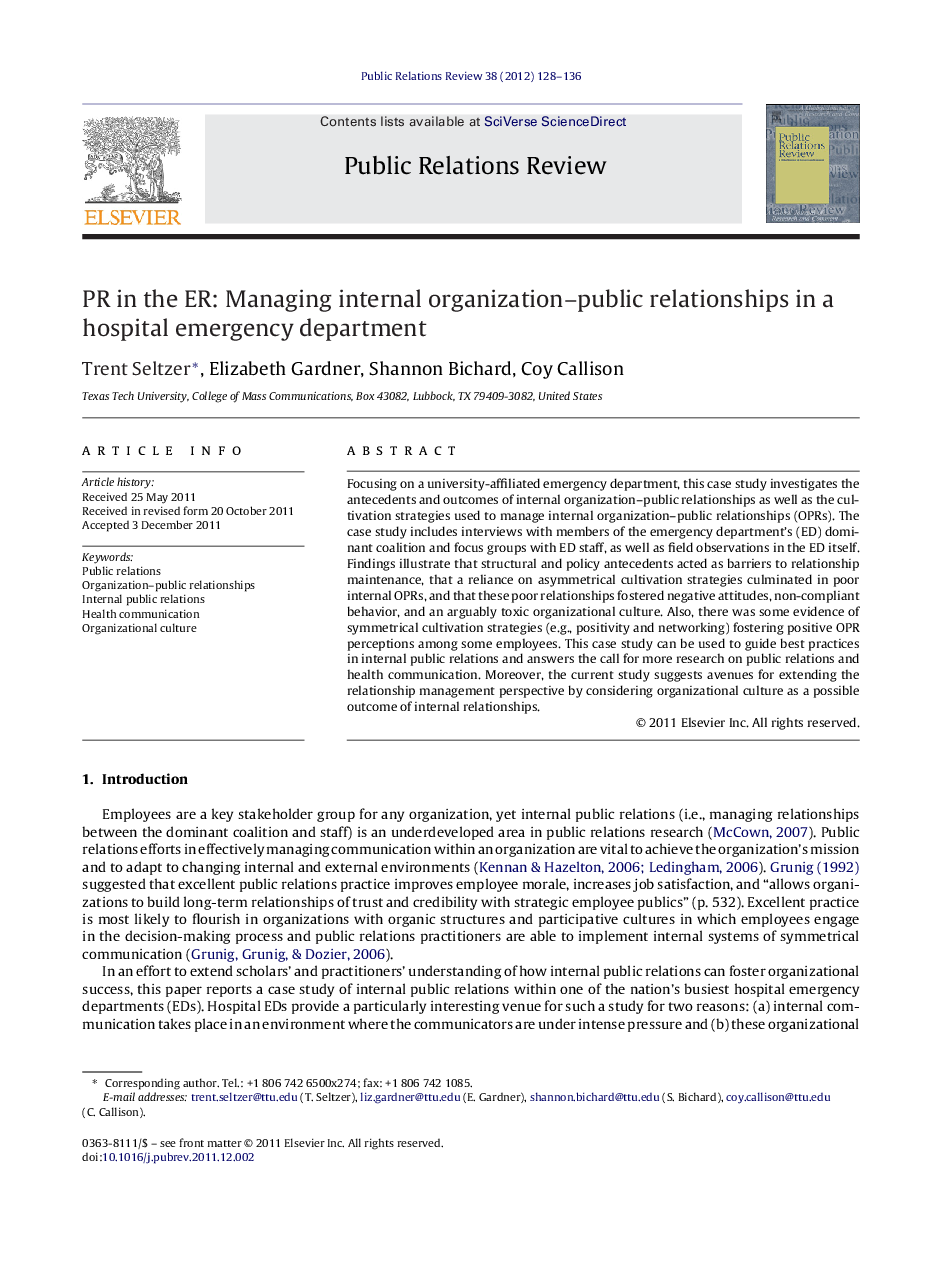| Article ID | Journal | Published Year | Pages | File Type |
|---|---|---|---|---|
| 139449 | Public Relations Review | 2012 | 9 Pages |
Focusing on a university-affiliated emergency department, this case study investigates the antecedents and outcomes of internal organization–public relationships as well as the cultivation strategies used to manage internal organization–public relationships (OPRs). The case study includes interviews with members of the emergency department's (ED) dominant coalition and focus groups with ED staff, as well as field observations in the ED itself. Findings illustrate that structural and policy antecedents acted as barriers to relationship maintenance, that a reliance on asymmetrical cultivation strategies culminated in poor internal OPRs, and that these poor relationships fostered negative attitudes, non-compliant behavior, and an arguably toxic organizational culture. Also, there was some evidence of symmetrical cultivation strategies (e.g., positivity and networking) fostering positive OPR perceptions among some employees. This case study can be used to guide best practices in internal public relations and answers the call for more research on public relations and health communication. Moreover, the current study suggests avenues for extending the relationship management perspective by considering organizational culture as a possible outcome of internal relationships.
► We studied the organization–public relationship in a hospital emergency department. ► Structural and policy antecedents acted as barriers to relationship maintenance. ► A reliance on asymmetrical cultivation strategies resulted in poor relationships. ► Poor relationships among internal publics resulted in negative outcomes. ► Organizational culture was identified as an outcome of internal relationships.
